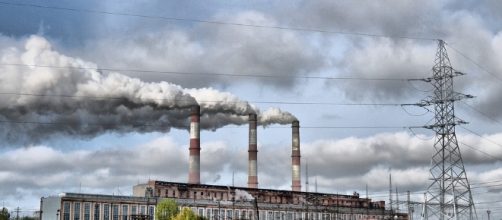The World Health Organization (WHO) considers Air Pollution a “major environmental risk” to health. High levels of polluted air are linked to various heart and respiratory diseases but a recent study has also shed some light on the hazardous effects of pollution on our kidneys.
Based on the latest research published online in the journal of the American Society of Nephrology, researchers found a substantial link between exposure to fine particulate air pollution and the risk of kidney disease and kidney function deterioration. In fact, the epidemiologic study suggested an increased risk for chronic kidney disease (CKD) and progression to end-stage Renal Disease (ESRD).
The study
A team of researchers from Washington University analyzed the health and kidney function data of more than 2.5 million individuals gathered from the databases of the Veterans Affairs. They covered the data that spanned almost nine years, starting in 2004, and compared them to the data of air-quality levels from the National Aeronautics and Space Administration (NASA), and the U.S. Environmental Protection Agency (EPA), Newburgh Gazette noted.
Scientific evidence on the connection between air pollution and kidney diseases in humans is limited. Washington University’s assistant professor of medicine and lead study author Ziyad Al-Aly explained that their findings provided the “clear” relationship between polluted air and the development of kidney diseases.
The study also suggested that more than 44,700 new cases of kidney disease and over 2,400 new cases of kidney failure could be attributed to the unhealthy and unsafe air pollution levels determined by the EPA.
According to the agency, the highest level of pollution that is safe is 12 micrograms per cubic meter of air. This threshold level was based on the figure set by the Clean Air Act of 1990, which was updated five years ago (in 2012).
A new study found that #airpollution can lead to #kidneydisease. Even low levels of pollution are a health risk. https://t.co/DlQLVOjb5V pic.twitter.com/IRE3qIFQxs
— PSR National (@DocsSpeakOut) September 22, 2017
Low levels of air pollution still pose health risks
The researchers explained that fine particulate matter air pollution such as those invisible and airborne, microscopic pieces of dirt or dust, smoke, liquid droplets, and soot become “destructive” when they enter the bloodstream.
Since the kidneys are responsible for filtering the blood, these minute yet harmful particles “can disrupt” the normal functions of the kidneys.
Unfortunately, the study also suggested that no level of particulate matter is considered safe. Al-Aly said that even low levels of particulate matter concentrations could still do harm to our kidneys, Futurity reported.
Other health impacts
Apart from our kidneys, air pollution is also bad for our cardiac and respiratory health, especially for children, pregnant women and the elderly. Polluted air can cause heart disease, lung cancer, stroke, and both acute and chronic respiratory diseases like asthma, bronchitis, chronic obstructive pulmonary disease (COPD) or emphysema.
According to Spare the Air, long-term exposure to polluted air can accelerate the aging of the lungs, damage the cells of the respiratory and cardiac systems, and shorten the lifespan of humans. Unfortunately, outdoor air pollution remains an “environmental health problem” that continually affects people living in developed and developing nations, the WHO said.
We may not always see it, but #AirPollution is the silent cause of some of our most common illnesses https://t.co/yuctEVxctz pic.twitter.com/6lysUZOQCz
— WHO (@WHO) September 14, 2017
High risks places in the US
Researchers were also able to determine certain geographic areas in the United States that have the worst levels of polluted air and are putting its population at great risk of developing kidney diseases.
Based on their findings, Southern California and large regions in the Northeast, Midwest and the South are at the “greatest risk” for kidney decline caused by air pollution.
Despite being an industrial giant and a contributor to the worsening pollution around the globe, the Trump administration still refuses to recognize the importance of addressing the potential impact of climate change. Aside from the United States, people in India and China are also at risk because the nations’ levels of air pollution are much higher compared to America.


